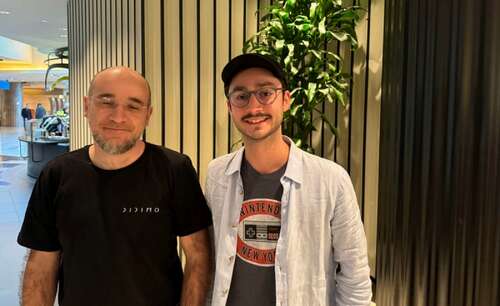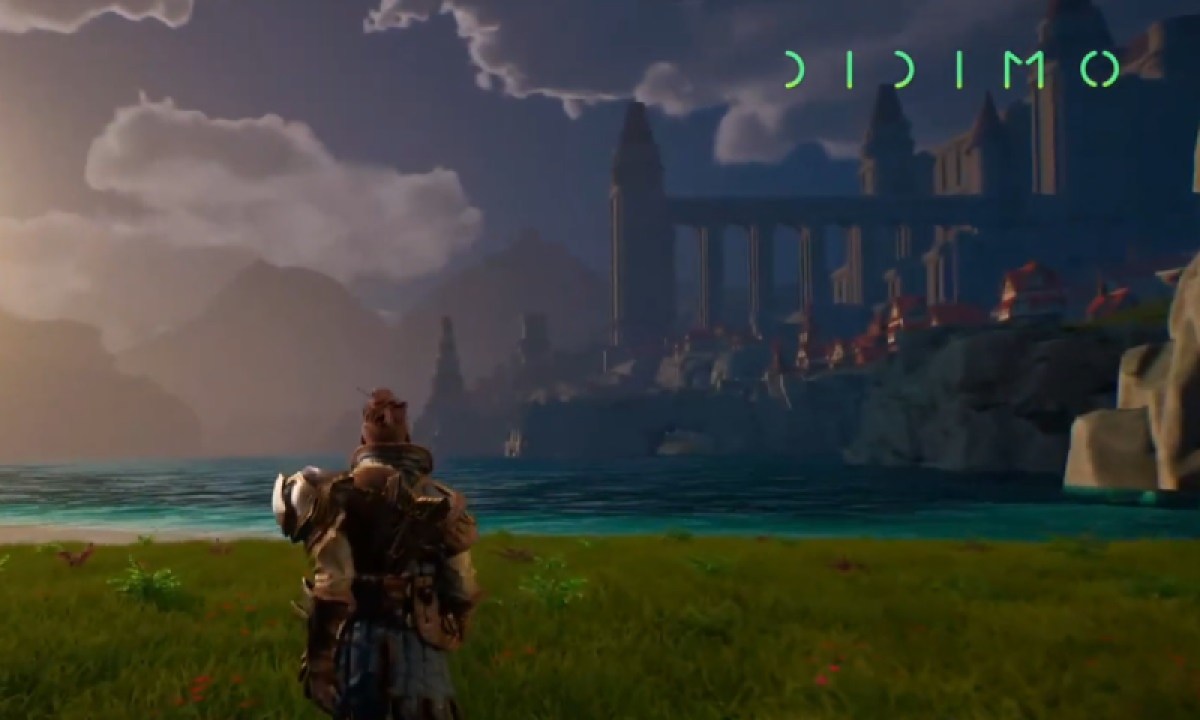Didimo, which makes tools for automating digital character creation, aims accelerate 3D character production with its Asset Verification System, an enhancement to the Popul8 platform.
The new feature from Porto, Portugal-based Didimo aims to ensure greater quality control, streamline workflows, and provide significant cost savings for game developers, addressing the escalating challenges faced by studios from indies to triple-A in the increasingly complex world of game development.
Didimo set out to redefine top-quality 3D character creation for games and entertainment with the launch of Popul8, its end-to-end platform that accelerates game production by enabling game developers and artists to quickly generate, edit, manage, and load infinite and unique characters into games.
At the Dice Summit last week in Las Vegas, I saw a demo of the tech from product marketer Raphaël Benros and CTO João Orvalho.
GB Event
GamesBeat Summit Call for Speakers
We’re thrilled to open our call for speakers to our flagship event, GamesBeat Summit 2024 hosted in Los Angeles, where we will explore the theme of “Resilience and Adaption”.
It works pretty good. You can take one character and ask it to make bunch of variations on that character and it will create similarly dressed characters of different genders, races and more. It happens fast, far quicker than an artist could do.
The Asset Verification System, seamlessly integrated into the Popul8 platform, addresses a critical need in the game development process with checking 3D assets for errors at scale. By automating the verification of customer-imported assets and providing instant feedback, workflows can progress more quickly, while technical artists are empowered with instant insights, thereby enhancing their efficiency and productivity, all resulting in accelerated asset creation. For Didimo’s customers, ensuring high fidelity and error-free assets are the norm, not the exception.
Putting artists in control

I asked Didimo if the new AI tech could reduce the number of 3D artist jobs. Orvalho said in an interview with GamesBeat that it takes artists to use the tool and make the most of it. Rather than eliminate the creative work, Didimo’s tool gets rid of the drudge work of making slight variations of characters so that players can enjoy customized avatars in games.
Orvalho said that the Didimo tool doesn’t create the art out of thin air. Rather, it relies on a human artist to create the initial art, like a game character. Then it takes that character and makes derivative art based on that character. In that sense, you still need the human to create the original art.
“It wasn’t just a character variation tool. At this point, it was solving problems like asset fitting, animation, retargeting, and exporting and memory optimization,” said Orvalho. “Managing the data of those models. What’s really interesting is they get to input all of their models or textures or assets. This is their work. We’re not recreating anything, aside from being able to create other unique characters, based off of those models.”
He added, “So that’s really exciting for them because suddenly they can get control over the kinds of variations. If you look in a room, everybody looks unique. And that’s what makes this so special about our human experience here. We give that power at their fingertips.”
That’s a sensitive point, as no artist wants to be replaced by AI.
“At the end of the day, all of the models and the assets are created by the art teams themselves. So the idea is to put their creations into this tool so they have more control and are able to produce more than they might traditionally be able to,” Benros said.
“The base work is fully controlled by artists in terms of the base template that you want to use, or the art style that you want for your game. We don’t create that. What we can do is leverage it,” Orvalho said.
Last year, Didimo launched Popul8, an end-to-end platform that uses AI to accelerate game production by simplifying the process of generating, editing, managing, and loading infinite and unique characters into games.
Didimo used human models and sampled different characteristics like age, ethnicity, gender or different body types. It sourced the images in an ethical way under a license. Didimo did not scrape the web or ingest data from dubious sources, Orvalho said.
“We bypassed that whole IP issue,” Benros said.
Asset Verification System

Today, the company said it is taking a leap forward by announcing the upcoming integration of the Asset Verification System, a tool that automates and refines the validation of art asset quality and usability within the Popul8 platform.
In the competitive landscape of game development, where staying on time and on budget is crucial, Didimo’s Asset Verification System addresses a critical need by automating the validation of 3D assets for errors at scale.
This ensures that game developers and technical artists can progress through workflows more efficiently, receiving instant insights and feedback on customer-imported assets. The result is accelerated asset creation, a boon for Didimo’s customers who seek high fidelity and error-free assets as standard.
Veronica Orvalho, CEO of Didimo, said in a statement, “With the addition of our new Asset Verification System to the Popul8 platform, Didimo is enabling the games industry to take a significant leap forward in modernizing asset quality assurance, making it faster and more reliable than ever. This is more than an update; it’s setting a new gold standard in 3D character creation and asset verification across the industry.”
The Asset Verification System provides an efficient solution for validating 3D assets, making it a useful tool for studios grappling with the rising costs of game development. Didimo’s tech is being used by studios worldwide, including Avalon, NOS Communications, Ceek, Soleil Game Studios, Sony and Atom Stars.
Customer traction
Popul8’s recent collaboration with Finnish game developer Colossal Order on Cities: Skylines II showcased the platform’s potential in efficient character creation, setting the stage for the broader industry to benefit from Didimo’s pioneering solutions. The crowds in the game are generated by Didimo’s non-player characters (NPCs), and they fit in with what Colossal Order created with the Unreal Engine.
“Popul8’s journey with Colossal Order on Cities: Skylines II highlighted the vast potential of efficient character creation,” added Orvalho.
Colossal Order was the first client and they challenged Didimo to scale up their simulation with crowds of individualized people.
“They needed a lot of character variation. So they came to us as they needed someone to build out the system. That’s where Popul8 came in. And they were the first people to get this technology hands on.
Small teams or big
Building on what it did with the Unity Engine, Colossal Order launched Popul8 in its game in October. The dev team was able to use Popul8 to create 2,600 unique characters. As many as 10,000 characters can fit in one scene, if the dev chooses to do that.
That was very exciting And it wasn’t too late. They got the characters in the game. And the technology is out there now, which is really exciting.
The company also signed Avalon, which launched a massively multiplayer online game at the end of last year.
“It shows a different capacity, where our tool was able to handle a high-quality art style,” Benros said. “We were able to onboard their art, their assets, in their style. That was very cool for them. Because they went from one model character to 25 characters.”
Avalon was an example of a small team working with just a handful of character artists.
“What we were able to do was also transform concept art into more models for them. So suddenly, they’re not just working with one character. They’re working with the 10 characters,” Benros said.
Benros showed me a demo of that working and how you could take one character and turn that character into an infinite number of variations.
“Last year, we built this first idea for a tool, which covers the end to end character creation system, with a lot of moments that could be automated, but always with the power for the artist and the technical artists to change change what they want,” Benros said.
Moving forward
Right now, the company makes just the characters. It doesn’t bring them to life through behavioral systems or movement systems, like making the characters have a swordfight. That’s the domain of other technologies, wielded by humans. Didimo also doesn’t embue the characters with personalities or knowledge. That’s something that an AI-based large language model (LLM) could do.
“We’re not doing any of the behaviors at this stage,” Benros said.
There are about 25 employees.
“We’re talking about, thankfully, being at this place with a lot of studios that are excited about this. We’re signing more that we can hopefully talk about,” Benros said.
If the company generates enough revenue from the product, then it may not have to raise more money from investors.
GamesBeat’s creed when covering the game industry is “where passion meets business.” What does this mean? We want to tell you how the news matters to you — not just as a decision-maker at a game studio, but also as a fan of games. Whether you read our articles, listen to our podcasts, or watch our videos, GamesBeat will help you learn about the industry and enjoy engaging with it. Discover our Briefings.

